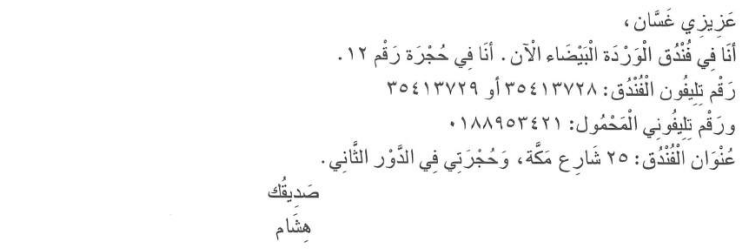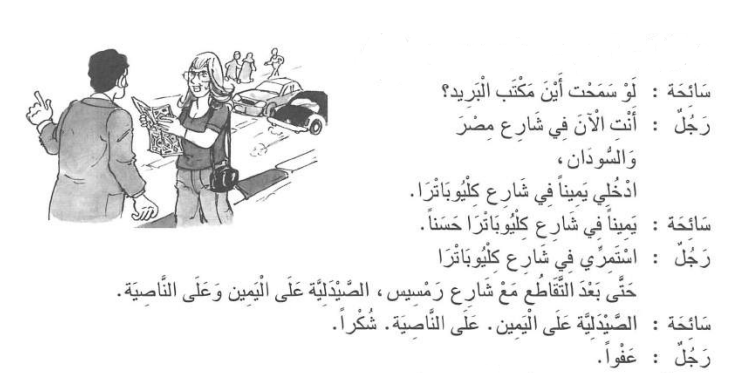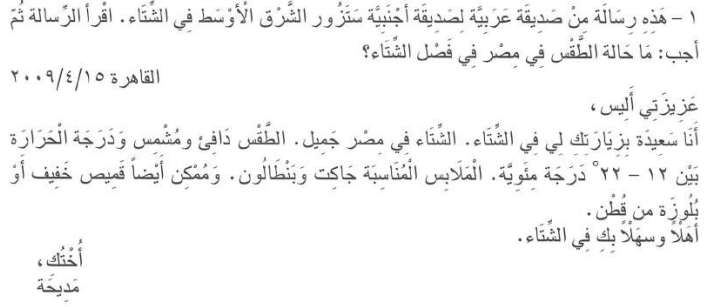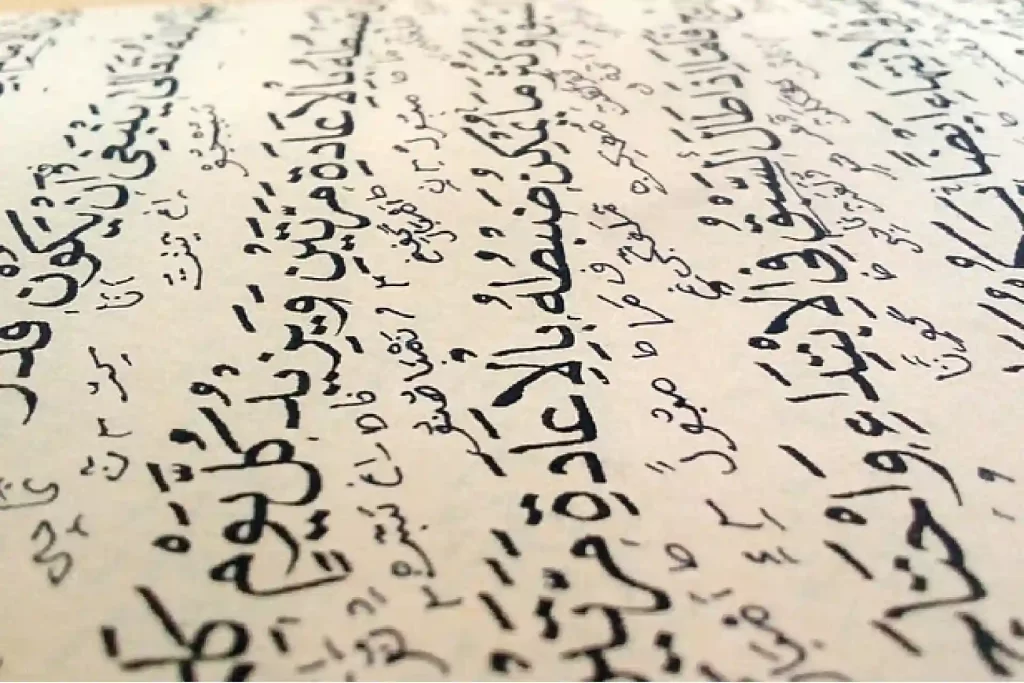Learning How to read Arabic is one of the aspects you should consider working on when you start learning Arabic, and this should be alongside the other skills of learning the language which are: listening, speaking and writing.
Today we are going to focus on giving you answers to 9 questions that will help you in your journey of reading Arabic, in addition to some examples of Arabic text to read for beginners.
This all is a beginner’s guide for you on how to read Arabic easily and correctly, especially for those who speak a whole different language than Arabic.
In This Article
Let’s take a look at every question and give answers to them as following:
What Are Reasons to Learn How to Read Arabic?
Undoubtedly, one of the important reasons to learn how to read Arabic or to read any language is that it would make your language learning process easier. In addition, reading Arabic would give you a wider range for practicing the language and getting more familiar with the alphabet, words, sentence forming and grammar. Moreover, all recent research indicates that the effective way to learn the language is by using the language itself.
What is the First Step to Learn to Read Arabic?
Before diving into reading Arabic, it’s crucial to familiarize yourself with the Arabic alphabet. Arabic script has its unique alphabet consisting of 28 letters. Each letter in Arabic has different forms depending on its position within a word. Explore the shapes and sounds of Arabic letters, and gain a solid understanding of the script’s fundamentals. Lay a strong foundation for your Arabic reading journey. Check this article about how to learn Arabic alphabet to know more about the steps you can take in your journey of learning the aspects of the language.
How Are Arabic Letters Written?
In order to read Arabic easily, you have to know that every letter changes depending on its position in the word (at the start, in the middle, at the end in the word and the letter by itself). Actually, this is one of the basics that should be learned at the beginning of your studying journey, that will help you further recognize words and read Arabic easily and quickly. Now, let’s take a look at the following letters, separated and in a word to note the difference:
- Separated: ح د ي ق ة
- In a Word: حديقة
From Which Side do I Read Arabic?
To learn how to read Arabic, it’s crucial to know that unlike European languages, Arabic is read horizontally from right to left and this is how it goes for most of the other Semitic languages. In fact, this can be quite confusing for those who are native speakers of languages that are written from left to right. However, regular Arabic reading practice would definitely help getting used to this different writing.
How to Get Acquainted with Arabic Phonetics?
Arabic phonetics play a vital role in reading Arabic accurately. Dive deeper into the phonetic system of Arabic, including consonants, vowels, and diacritical marks. Learn how to pronounce Arabic letters and their corresponding sounds. Practice phonetic exercises, listen to native speakers, and train your ear to distinguish Arabic sounds. Mastering Arabic phonetics is a crucial step in your journey to read Arabic fluently.
What is Tashkeel (Diacritical Marks) and What is its importance for Reading Arabic?
In the Arabic language, diacritical marks, known as “tashkeel,” play a vital role in ensuring accurate pronunciation, understanding grammatical structures, and differentiating between words that share the same root letters. Tashkeel consists of various symbols and marks placed above or below the letters to indicate vowel sounds, elongation, and other linguistic nuances.
Tashkeel encompasses a range of symbols and diacritical marks that modify the pronunciation and meaning of Arabic words. Let’s explore some of the key tashkeel symbols and their functions:
- Fatha (ـَ): Placed above a letter, it indicates a short “a” sound (/a/).
- Kasra (ـِ): Positioned below a letter, it represents a short “i” sound (/i/).
- Damma (ـُ): Placed above a letter, it signifies a short “u” sound (/u/).
- Sukun (ـْ): Placed above a letter, it indicates the absence of a vowel sound.
- Shadda (ّ): Placed above a letter, it signifies gemination or the doubling of a consonant.
- Tanween: Consisting of three symbols ( ً | ٌ | ٍ ), it represents the indefinite accusative ending (-an) or the indefinite nominative ending (-in) depending on the context.
These diacritical marks are essential for accurate pronunciation, as they guide readers in vocalizing the correct sounds and intonation patterns.
Importance of Tashkeel in Arabic Reading and Comprehension:
- Clarity in Pronunciation: Tashkeel aids readers, particularly beginners, in correctly pronouncing Arabic words. By indicating the specific vowels and elongations, tashkeel eliminates ambiguity and ensures accurate pronunciation. It helps learners avoid misinterpretations and facilitates effective communication in spoken Arabic.
- Differentiation of Words: Arabic words often share the same root letters but have different meanings based on the arrangement of vowels. Tashkeel plays a crucial role in distinguishing between these words. By providing clarity regarding vowel sounds, tashkeel enables readers to differentiate between homonyms, enhancing comprehension and preventing confusion.
- Grammar and Syntax: Tashkeel is instrumental in understanding the grammatical structure and syntax of Arabic sentences. It helps identify the subject, object, verbs, and other grammatical components by indicating vowel endings and inflections. Tashkeel aids in grasping the intricate rules governing Arabic grammar, allowing learners to construct accurate and coherent sentences.
- Textual Analysis and Recitation: In Quranic studies, understanding tashkeel is essential for interpreting the text accurately. Reciters rely on tashkeel to adhere to the rules of Tajweed (Quranic recitation) and observe the proper pronunciation of words. Tashkeel facilitates the recitation of Quranic verses with proper rhythm, intonation, and pronunciation.
In fact, reading Arabic with Tashkeel is more likely to be important for reading Modern Standard Arabic. On the other hand, if you’re learning a colloquial Arabic dialect, learning how to read Arabic with Tashkeel will be very helpful in advanced levels.
What Are Steps of Learning How to Read Arabic?
- Studying the Arabic Alphabet and the letters pronunciation: make sure to know everything about the Arabic alphabet and the sounds of the letters as a very basic step to start your learning process.
- Putting Letters Together: having grasped core characters, examine short words showcasing letters’ usage. In addition, note vowels, stress marks and common syllable structures hinting at pronunciation. Further, read examples to internalize fluid rhythms. Shadow dictations and self-recordings reinforce mimicking cadences naturally. Beside all of this, don’t forget that with repetition, comprehending full words feels instinctual.
- From Isolated Words to Phrases: Practice short sets and sentences incorporating familiar terms in new contexts. Written drills reinforce term conceptualizations beyond visual encoding alone. Also, reading out loud then self-listening aids catching subtleties initially missed. Taking dictation exercises builds internalization of phonetic patterns emerging. Piece by subtle piece, comprehension expands exponentially.
- Explore Basic Reading Techniques: start with simple words and short sentences to build your reading skills gradually. Focus on recognizing Arabic letters, vowel marks, and diacritical signs. Practice reading aloud to familiarize yourself with the rhythm and flow of Arabic text. Engage in Arabic reading exercises specifically designed for beginners, gradually increasing the complexity to enhance your reading fluency.
- Learn Common Arabic Words: Start with everyday vocabulary related to greetings, numbers, colors, and family members. Use flashcards, online resources, and language apps to reinforce your vocabulary acquisition. As you progress, challenge yourself with more advanced vocabulary related to various topics such as food, travel, and culture. A rich vocabulary will greatly enhance your reading skills.
- Dive into Arabic Texts for Beginners: Seek out books, articles, and online resources that provide simplified texts with glossaries and translations. Start with short stories, children’s books, or graded readers tailored to your language proficiency level. Gradually increase the difficulty level of the texts as you become more confident in your reading abilities. Reading regularly will help you internalize Arabic grammar, vocabulary, and sentence structures.
- Use Authentic Materials: challenge yourself by incorporating authentic Arabic materials into your practice. Explore newspapers, magazines, and online articles written in Arabic. Engage with Arabic websites, blogs, and forums that match your interests. Practice reading at your own pace, focusing on comprehension and expanding your knowledge of Arabic culture.
- Cultivate a Reading Routine: Consistency is key to mastering Arabic reading. Establish a regular reading routine that fits your schedule. Set aside dedicated time each day to practice reading Arabic text. Choose a comfortable and quiet environment that allows you to focus and concentrate. With regular practice, you’ll notice significant improvements in your reading speed, comprehension, and overall language skills. Make reading Arabic a joyful habit in your language learning journey.
- Seek Guidance from Native Arabic Speakers: Engage in language exchange programs, join online communities, or find a language tutor who can provide valuable insights and feedback. Native speakers can help you with pronunciation, comprehension, and understanding the cultural nuances embedded in Arabic text. Embrace the opportunity to converse in Arabic and gain a deeper understanding of the language’s context and usage.
What Are Good Arabic Books to Read?
There are some good Arabic books that we can recommend when you start learning how to read Arabic:
- “Kallimni A’rabi Beshwash” for beginners in A’meya
- “Lughatona Alfusha” in Modern Standard Arabic
- “Alkitab” (Modern Standard Arabic – Egyptian Colloquial Arabic – Levantine)
Final Question: Should I Learn How to Read Arabic?
Undoubtedly, learning to read Arabic can be quite confusing and requires some effort at first, but is it worth it?
In fact, the answer to this question might differ from one person to another, depending on the importance of the reading Arabic step for their language learning process. Generally, learning how to read Arabic is more important for those who want to read books, newspapers, literature and seek professional jobs that require learning Modern Standard Arabic.
To sum up, learning how to read Arabic is not that important if you are just looking for some Arabic vocabulary to use for speaking. On the other hand, it is a must, if you are willing to reach a high level in the language.
Examples of Arabic Text to Read for Beginners:
To learn how to read Arabic effectively, you have to work on Arabic reading practice as much as you can. Here you are some examples of Arabic text to read for beginners from “Lughatuna Alfusha Book 1:
Text 1: a message to a friend telling them about your place

Text 2: a dialogue between a tourist and a random man on the street, the tourist is asking about directions to the post office

Text 3: a letter from an Arab friend to a foreign one that is visiting the Middle East in Winter

In essence, learning how to read Arabic is part of the whole learning Arabic process that should take good care with the other skills (speaking, listening and writing) in order to reach the desired goal in the Arabic language.

